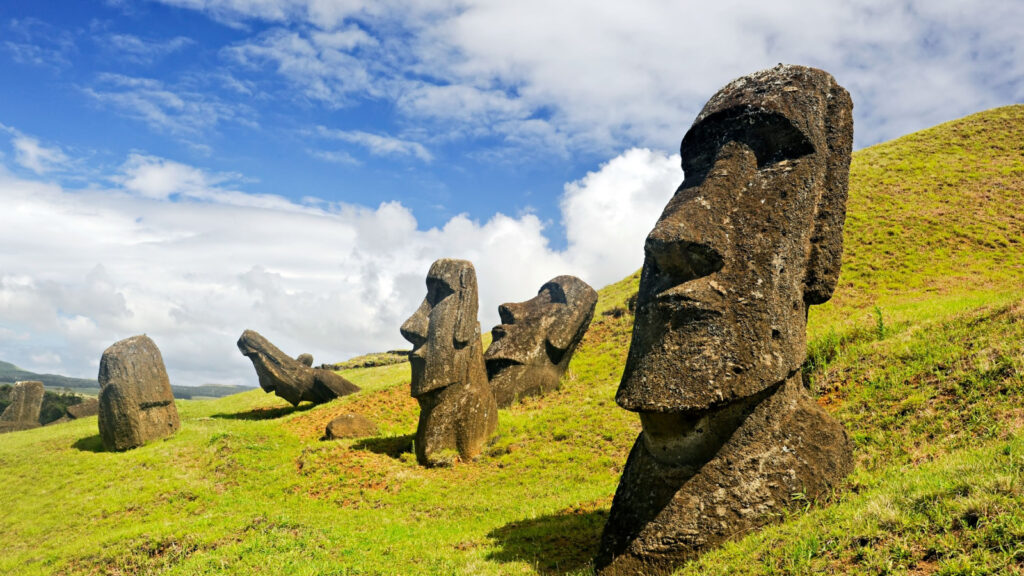Our planet is a treasure trove of wonders, some understood and others enigmatically wrapped. Despite the advanced tools and methods available to scientists, some places on Earth remain largely unexplained. These sites, with their peculiar phenomena and elusive histories, captivate our imagination and push the boundaries of our understanding.
The Bermuda Triangle

Situated between Miami, Bermuda, and Puerto Rico, the Bermuda Triangle is notorious for the mysterious disappearance of numerous ships and aircraft. Theories range widely, including environmental explanations like underwater methane hydrates releasing air pockets that could reduce water density, to more speculative ideas like electromagnetic anomalies or even alien abductions. Despite extensive research, no definitive explanation has been agreed upon, and the area remains one of the world’s most enduring mysteries.
Stonehenge
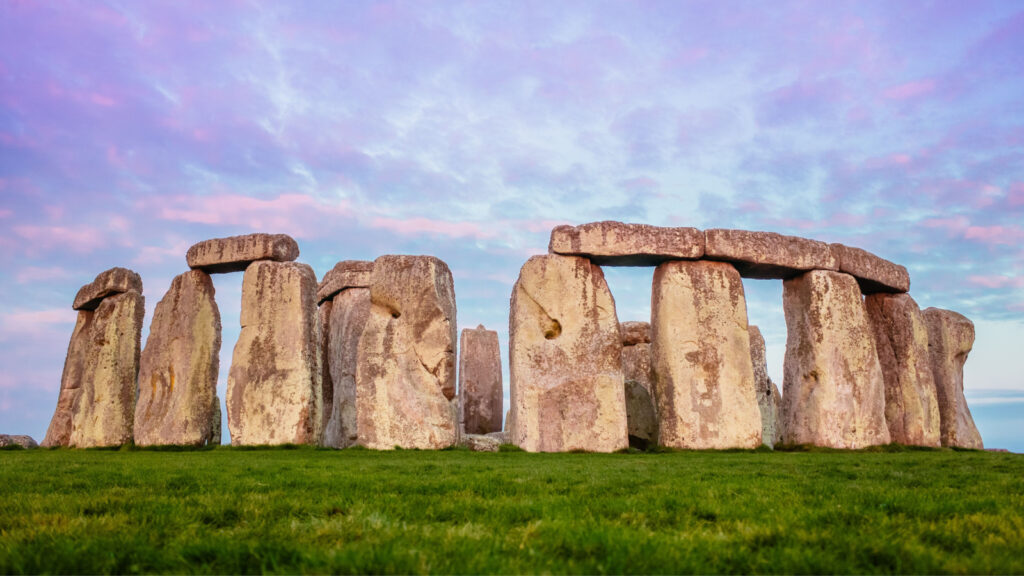
Stonehenge, located in England’s Wiltshire, consists of massive stone circles erected around 2500 BC. Its construction, using stones transported from Wales, remains a marvel of prehistoric engineering. Theories about its purpose range from astronomical observatories to religious sites. Despite extensive archaeological studies, the full story behind Stonehenge remains elusive.
The Nazca Lines
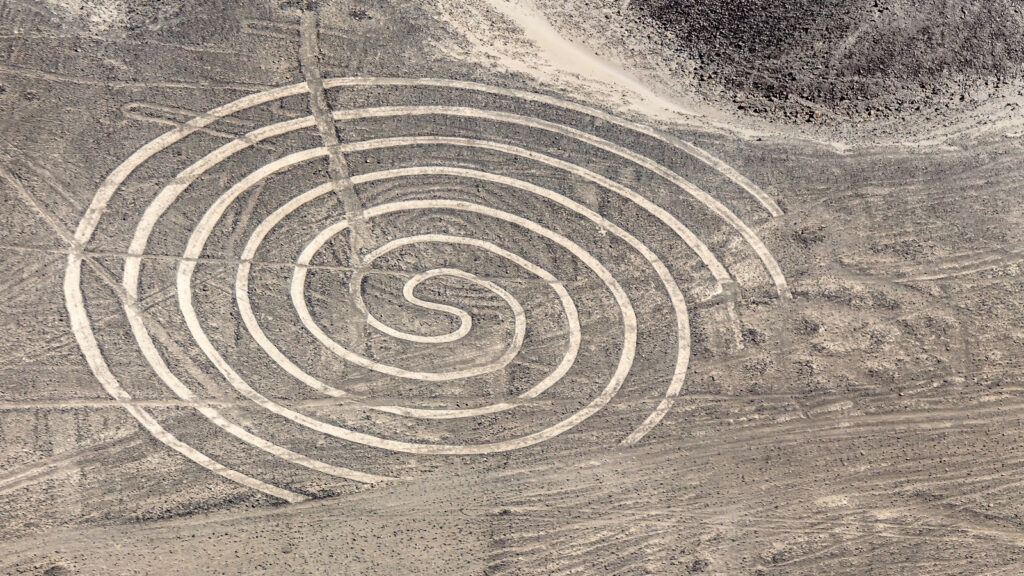
The Nazca Desert in Peru is home to the Nazca Lines, a series of large ancient geoglyphs depicting various animals and shapes. These lines, created between 500 BC and 500 AD, are so large that their full designs can only be seen from the air, leading to theories about their creation, ranging from astronomical purposes to ancient alien theories. Despite various studies, their exact purpose remains a mystery.
Teotihuacan
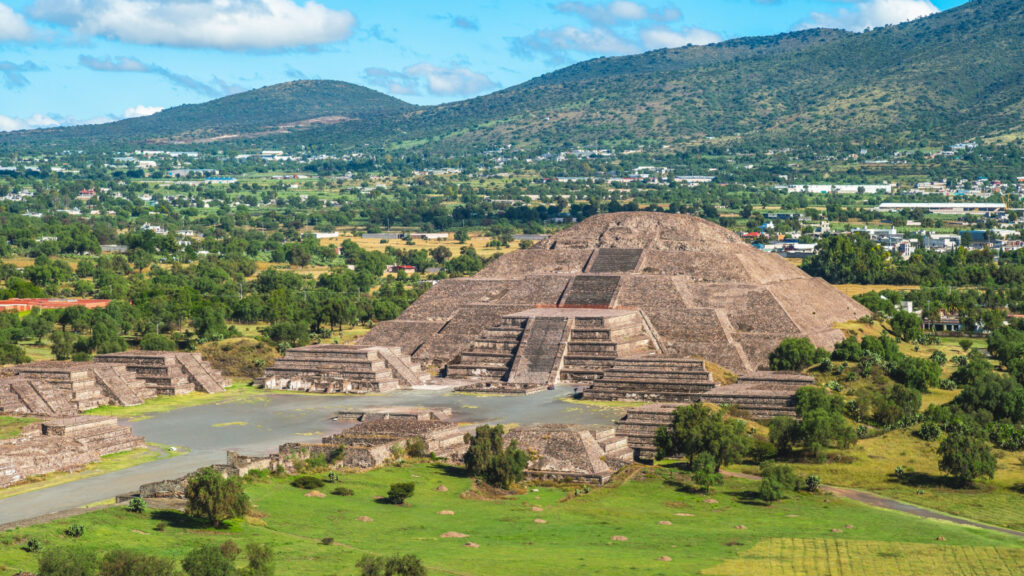
The ancient city of Teotihuacan in Mexico, known for its vast pyramids like the Pyramid of the Sun, was built by a pre-Aztec civilization. The city was a significant Mesoamerican cultural center, but the civilization that built it disappeared mysteriously, leaving behind few records of its existence. The reasons for its decline and the identity of its builders remain unknown.
The Dancing Forest
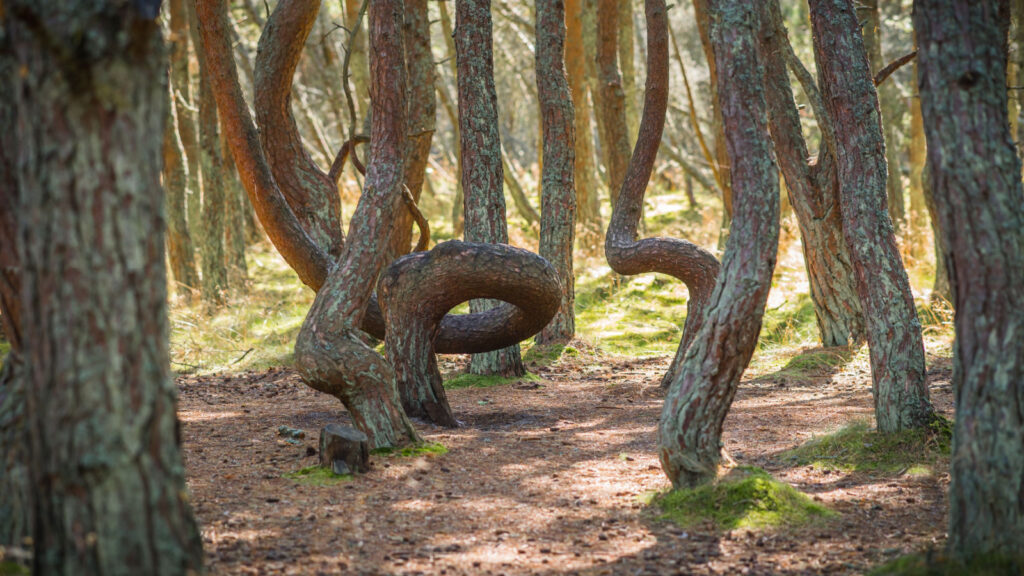
Located in Russia’s Kaliningrad region, the Dancing Forest features pine trees that twist and turn into unusual spiral shapes. The cause of this phenomenon is unknown, with theories ranging from unstable soil to human intervention to energy fields. The forest’s unique and eerie appearance continues to attract attention and speculation.
Mohenjo-Daro
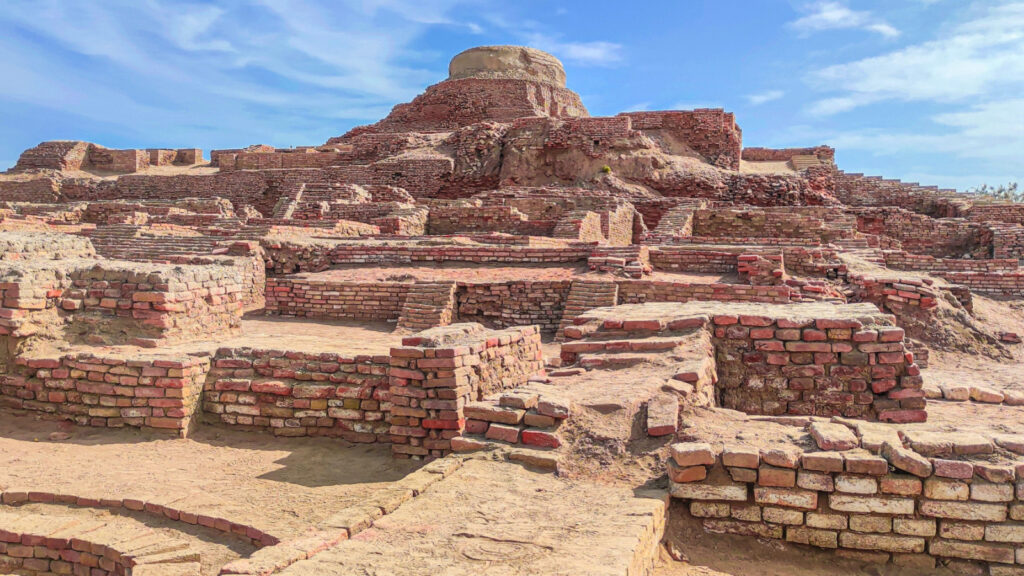
The ancient city of Mohenjo-Daro, located in present-day Pakistan, was one of the major urban centers of the Indus Valley Civilization. Known for its advanced urban planning and architecture, the city was mysteriously abandoned around 1900 BC. Theories for its abandonment include climate change, invasion, or natural disasters, but no definitive conclusion has been reached.
The Sailing Stones

The Sailing Stones of California’s Death Valley are a geological phenomenon where rocks move across the flat desert floor, seemingly on their own, leaving long tracks behind them. Various hypotheses have been proposed, including ice sheets and strong winds, but the exact mechanism remains the subject of ongoing research and debate.
Easter Island

Off the coast of Chile, Easter Island is famous for its enigmatic moai and massive stone statues created by the island’s early Rapa Nui inhabitants. The purpose of these statues and how they were transported remain a topic of research. Theories include the use of wooden rollers and ropes and even the possibility of a now-lost advanced technology.
The Great Blue Hole
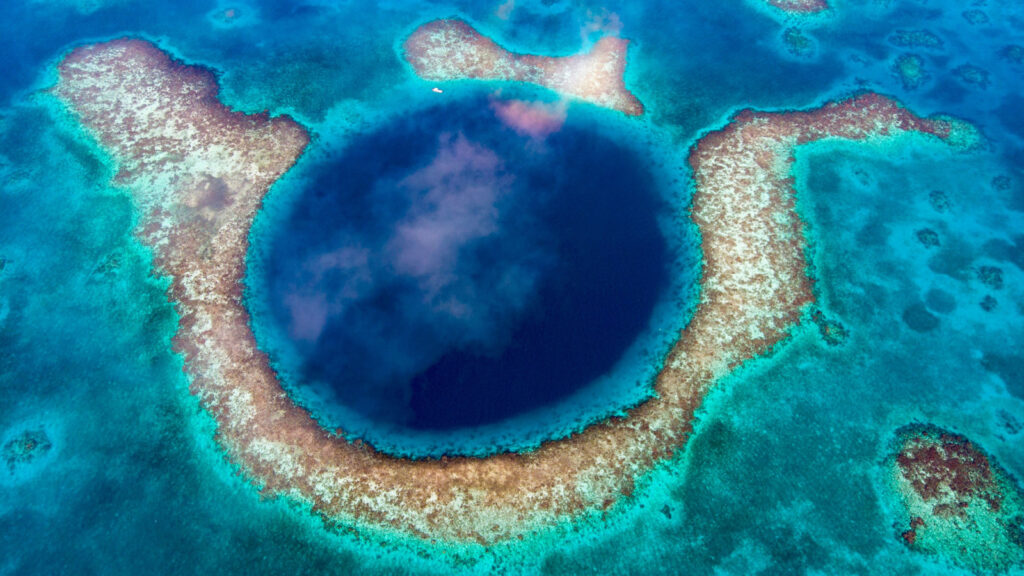
The Great Blue Hole, off the coast of Belize, is a giant marine sinkhole over 300 meters across and 125 meters deep. It’s a part of the larger Belize Barrier Reef Reserve System, a UNESCO World Heritage site. The hole’s formation is linked to the last Ice Age, but its depths hold mysteries, including unique microbial life and clues to Earth’s climatic history.
The Devil’s Kettle

In Minnesota’s Judge C.R. Magney State Park, the Devil’s Kettle waterfall features a geological anomaly: Half of the Brule River disappears into a pothole. Despite various theories and experiments, the exact location where the water reemerges remains unknown, leading to numerous speculations and myths about its destination.
Aokigahara Forest

Japan’s Aokigahara Forest, also known as the Sea of Trees, is a dense woodland at the base of Mount Fuji. Known for its serene beauty, it’s also infamous as a site for suicides, which has led to numerous urban legends and a reputation as a haunted place. The forest’s thick vegetation and absence of wildlife contribute to its eerie silence and atmosphere.
The Plain of Jars

In Laos, the Plain of Jars is a mysterious archaeological landscape featuring thousands of stone jars scattered across the highlands. The jars are believed to be over 2,000 years old, but their original purpose remains a debate among archaeologists, whether for storage, burial, or something else.
The Underwater Ruins of Yonaguni

Off the coast of Yonaguni, Japan, submerged rock formations resemble architectural structures, leading to debate over whether they are natural or man-made. Some believe these formations could be remnants of a lost civilization, while others argue they are natural geological formations shaped by tectonic activity and erosion.
The Giant’s Causeway
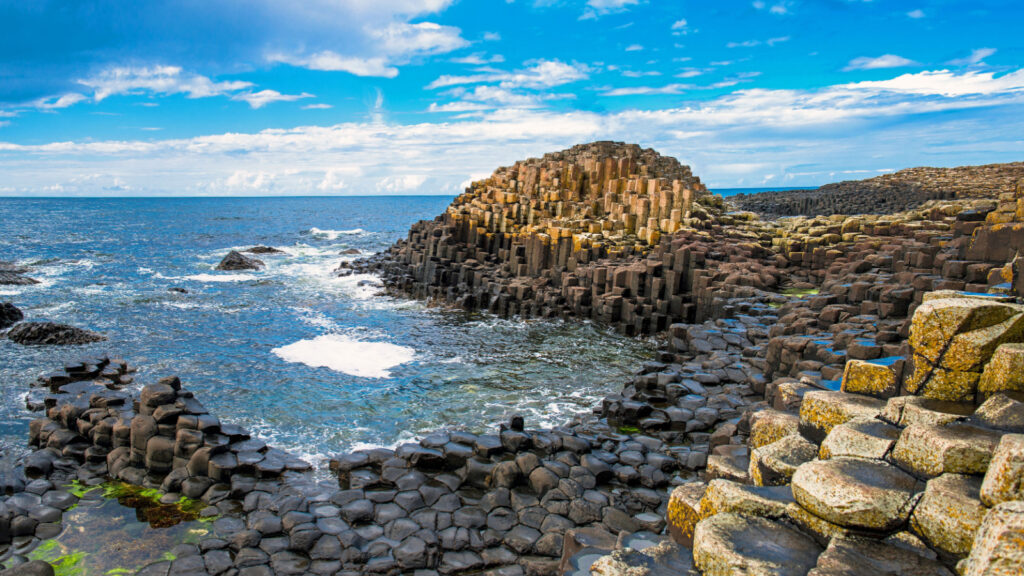
Located in Northern Ireland, the Giant’s Causeway comprises about 40,000 interlocking basalt columns resulting from an ancient volcanic eruption. Local legends attribute the formation to a giant, Finn McCool, who created stepping stones to Scotland, adding a mythical dimension to this natural wonder.
Göbekli Tepe
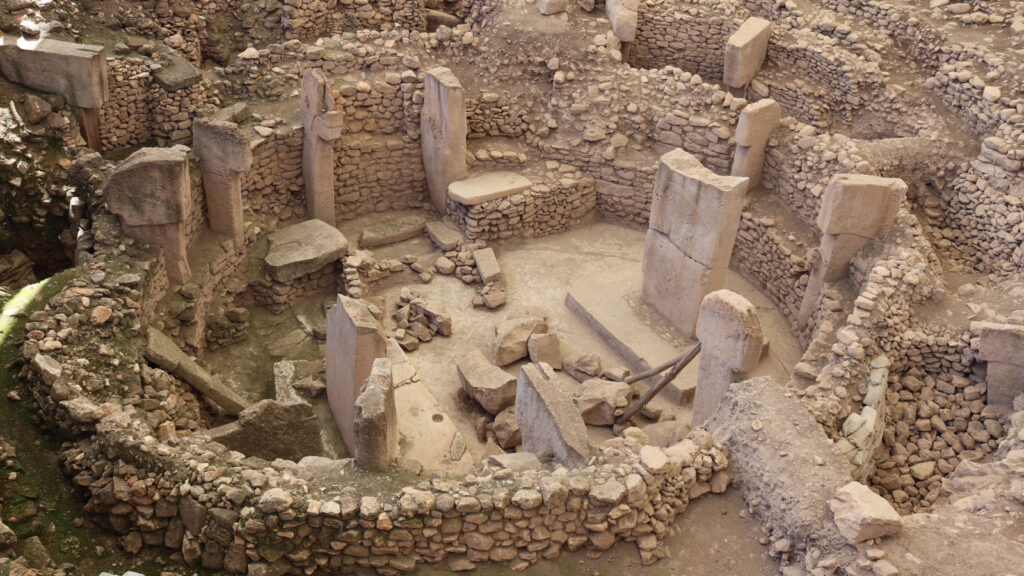
Göbekli Tepe in Turkey is an archaeological site that predates Stonehenge by over 6,000 years. This site includes numerous massive stone pillars arranged in circles, adorned with intricate carvings of animals and abstract symbols. The site’s sudden burial and the identity of its builders remain a mystery, suggesting a sophisticated and yet unknown prehistoric culture.
Mount Roraima
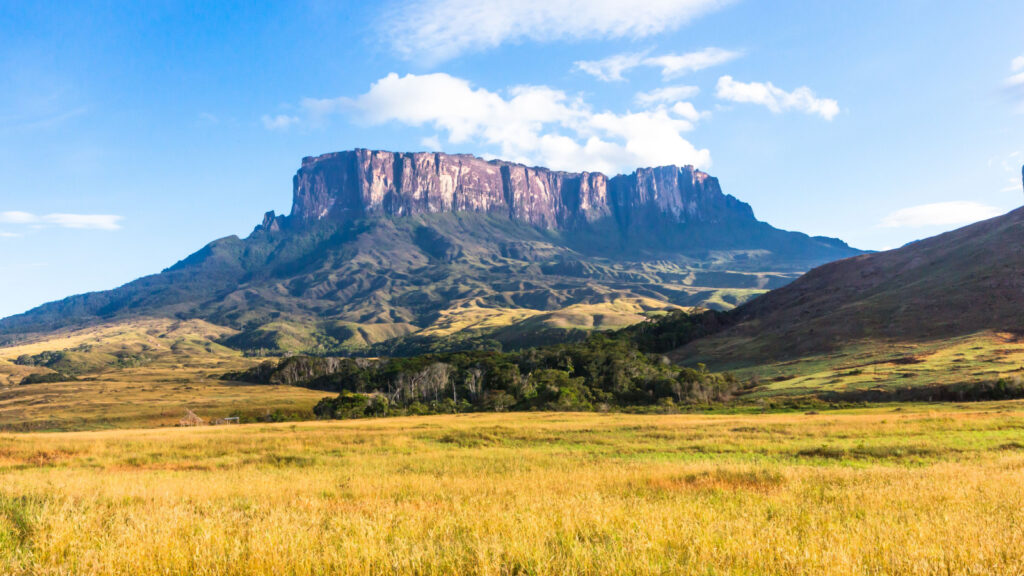
This tabletop mountain in South America, located at the junction of Venezuela, Brazil, and Guyana, inspired Sir Arthur Conan Doyle’s novel “The Lost World.” Known for its flat top and sheer cliff faces, Mount Roraima’s unique ecosystem and geological formation continue to fascinate scientists and explorers.
The Taos Hum
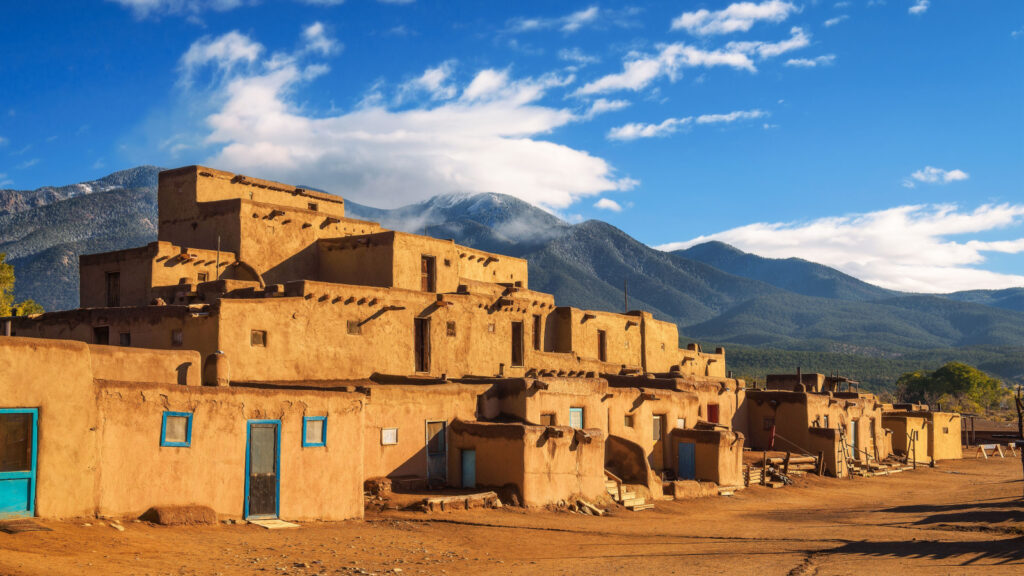
Some residents of Taos, New Mexico, report a low-frequency hum, which has led to various investigations. The source of this hum remains unidentified, with hypotheses including psychological phenomena, natural sounds, or mechanical sources. The Taos Hum is one of several reported “hum” phenomena worldwide.
The McMurdo Dry Valleys

The McMurdo Dry Valleys in Antarctica are among Earth’s driest and coldest deserts. Due to katabatic winds, their ice-free conditions have made them a focus of scientific study. They are considered the closest terrestrial environment to Mars, providing a unique location for astrobiological research.
The Eternal Flame Falls

Located in Chestnut Ridge Park, New York, the Eternal Flame Falls features a small natural gas flame within a waterfall. The flame, which can be extinguished and relit, is fueled by natural gas seeping through cracks, creating a rare natural phenomenon where fire and water coexist.
The Black Forest

Germany’s Black Forest, a large, dense woodland, is steeped in folklore and legends, from the Brothers Grimm fairy tales to myths of ghosts and werewolves. Its dark canopies and ancient landscapes have been a source of inspiration and mystery throughout history.
The Catacombs of Paris

Beneath Paris lies an extensive network of catacombs, serving as the final resting place for over six million people. The catacombs were created in the late 18th century to address the city’s overflowing cemeteries and have since become a symbol of Paris’s dark and mysterious past.
The Magnetic Hill
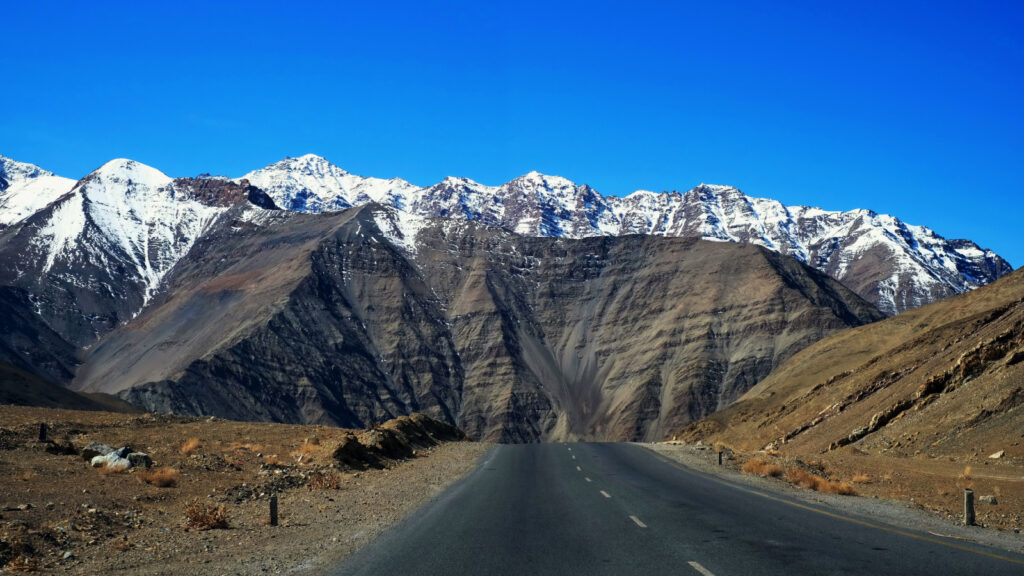
In the Ladakh region of India, the Magnetic Hill is known for the optical illusion that makes vehicles appear to roll uphill against gravity. This phenomenon is actually due to the hill’s unique gravitational pull and the surrounding landscape’s layout, which tricks the eye.
The Door to Hell
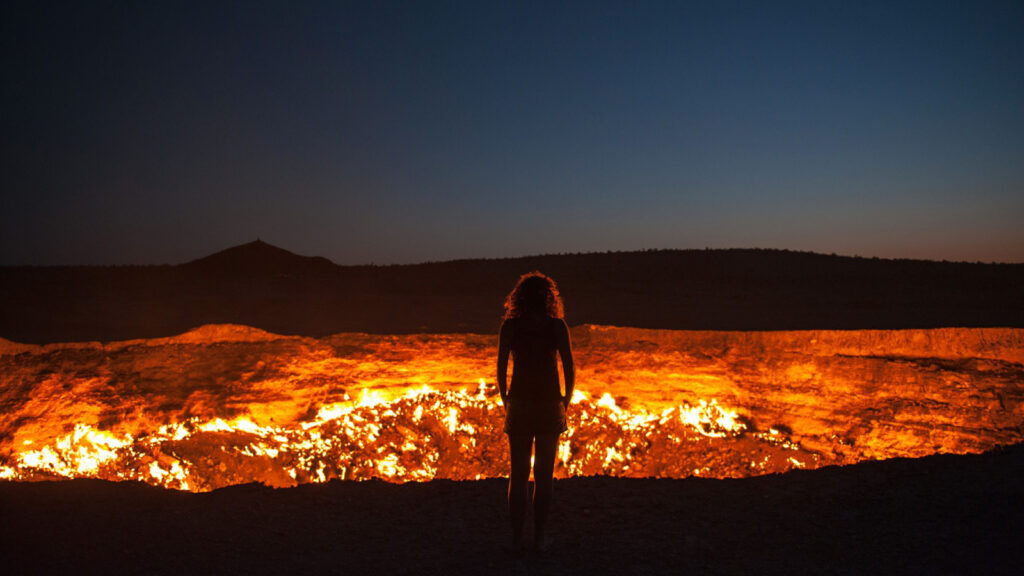
The Door to Hell is a natural gas field in Derweze, Turkmenistan, that has been burning continuously since it was set on fire in 1971 by geologists to prevent the spread of methane gas. The site has become a bizarre attraction, with its glowing flames offering a surreal spectacle.
The Devil’s Bridge
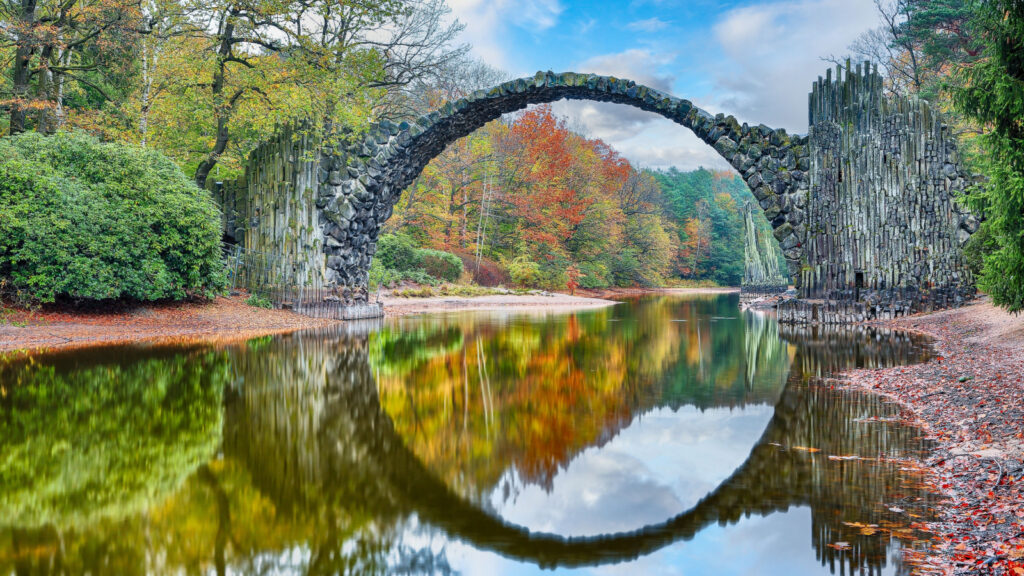
The Devil’s Bridge in Kromlau, Germany, is an architectural marvel known for its perfect circle reflection in the water below. Built in the 19th century, this parabolic arch bridge has inspired numerous legends and is a popular subject for photographers due to its unique and enchanting appearance.
The Crooked Forest
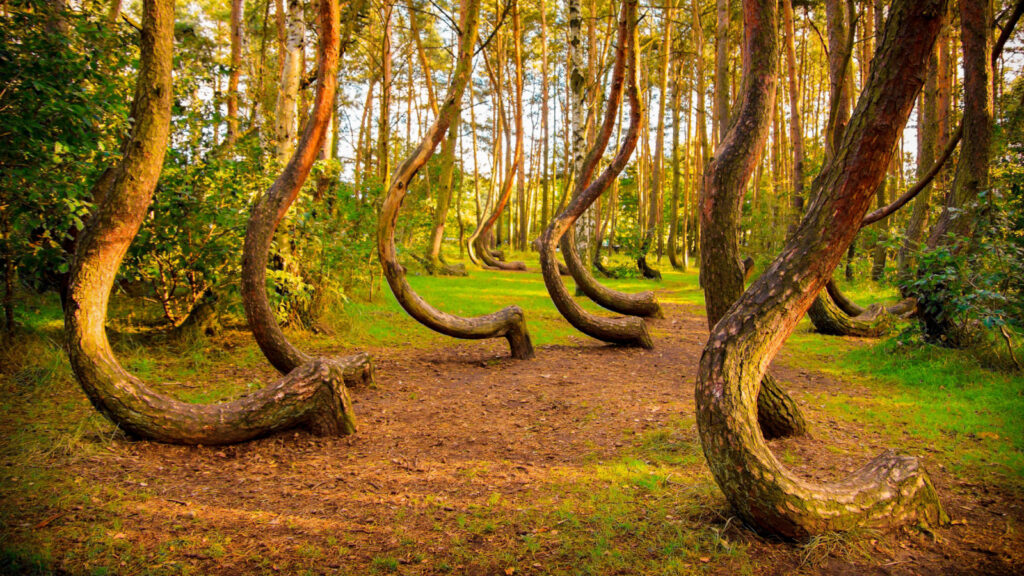
Near the town of Gryfino in Poland, the Crooked Forest is a grove of pine trees that grow with a sharp 90-degree bend at their base. The cause of this unique formation is not fully understood, with theories ranging from human intervention during their growth to unique natural growth patterns.
The Fairy Circles
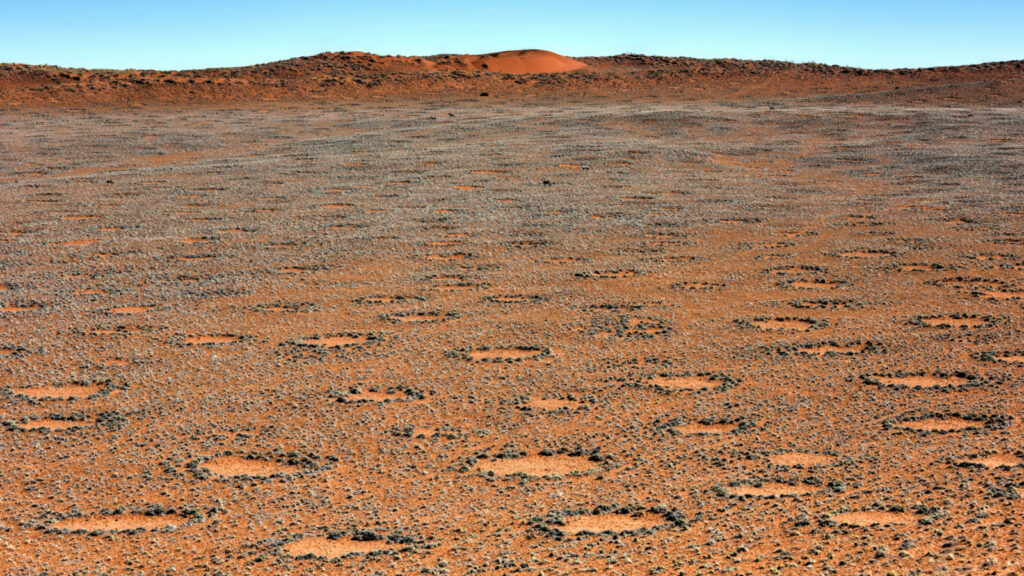
In Namibia’s Namib Desert, the Fairy Circles are a natural phenomenon consisting of circular patches void of vegetation amidst grass-covered land. Theories about their formation include termite activity, plant competition, and natural soil composition, but no definitive explanation has been agreed upon.
The Dogon Tribe and Sirius B

The Dogon Tribe in Mali is known for its astronomical knowledge, including detailed information about the Sirius B star, which was known to them before its discovery by Western scientists. This has led to various theories about their source of knowledge, ranging from ancient astronomical methods to extraterrestrial influences.
The Richat Structure (Eye of the Sahara), Mauritania

Visible from space, the Richat Structure is a prominent circular feature in the Sahara Desert. Initially thought to be a meteorite impact site, geological studies suggest it’s a symmetrical uplift (dome) that has eroded evenly. The structure’s perfect circularity remains largely unexplained, making it a geological enigma.
The Waitomo Glowworm Caves, New Zealand

The Waitomo Caves in New Zealand are renowned for their population of glowworms, a species found exclusively in New Zealand. These glowworms emit luminescent light, creating a starry effect on the cave ceilings. The biological process and evolutionary reason for this bioluminescence continue to be researched.
The Fly Geyser, Nevada, USA

Located on a private ranch in Nevada, the Fly Geyser is a small geothermal geyser that was accidentally created during well drilling in 1964. The geyser is notable for its vibrant colors caused by thermophilic algae. The geyser’s continuous growth and changing shape make it a unique geological formation.
The Lake Hillier, Australia

Lake Hillier in Western Australia is famous for its striking pink color. The coloration is due to a specific type of microalgae and bacteria. While several pink lakes exist worldwide, Lake Hillier’s vibrant and consistent pink hue, especially when contrasted with the blue ocean nearby, remains a fascinating sight.
The Fairy Chimneys of Cappadocia, Turkey

Cappadocia is known for its “Fairy Chimneys,” tall, cone-shaped rock formations naturally sculpted by erosion. Human history is deeply integrated into these formations, with many featuring ancient cave homes and churches. The geological processes behind their formation and the human history intertwined with them present a unique blend of natural and cultural mystery.
The Mount Kailash, Tibet

Mount Kailash is considered sacred in several religions, including Hinduism and Buddhism. Its near-perfect symmetrical shape and religious significance make it a subject of both spiritual intrigue and geological interest. Climbing the mountain is forbidden, which adds to its mystique and leaves many of its geological aspects unexplored.
